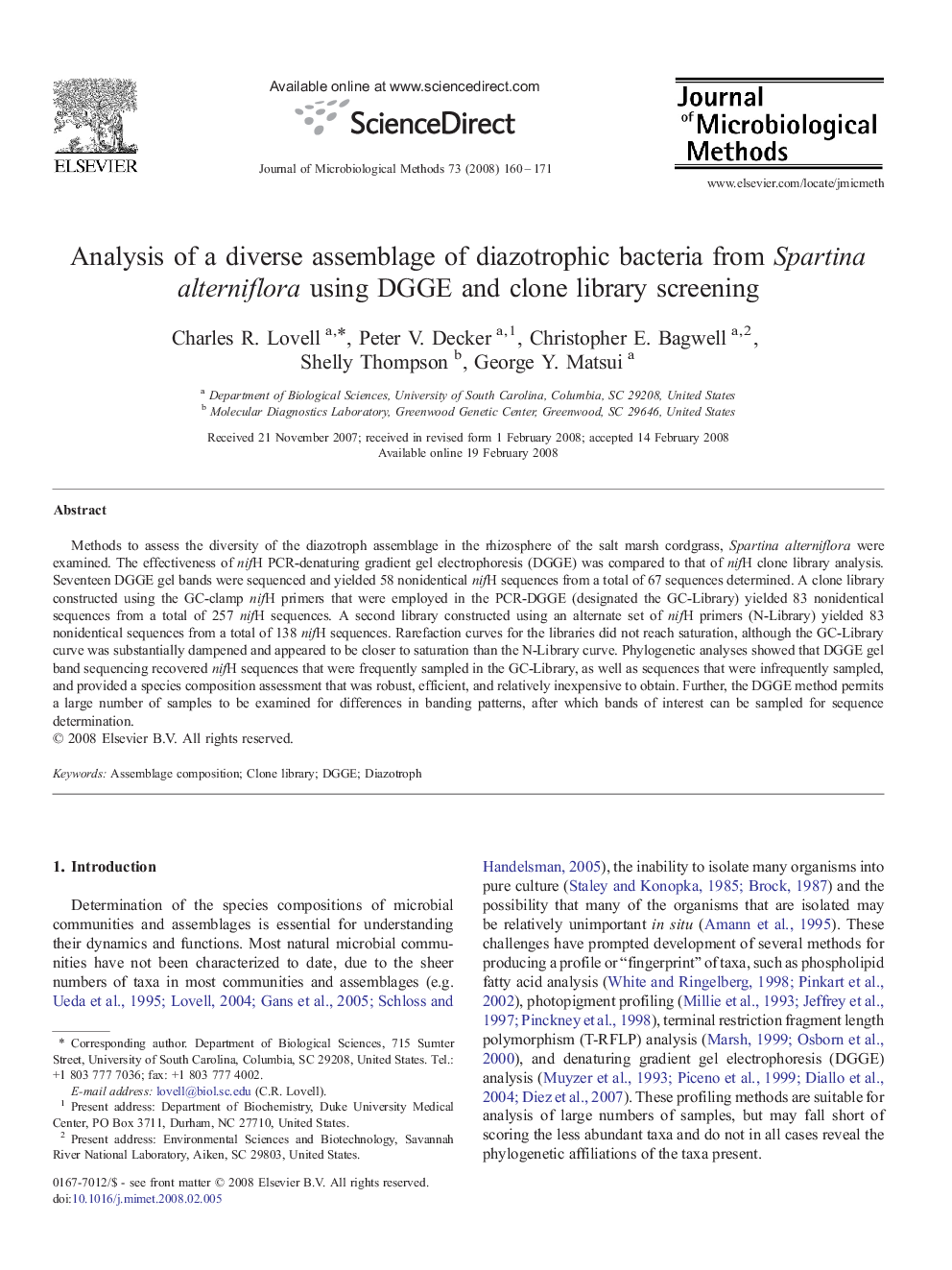| Article ID | Journal | Published Year | Pages | File Type |
|---|---|---|---|---|
| 2090967 | Journal of Microbiological Methods | 2008 | 12 Pages |
Methods to assess the diversity of the diazotroph assemblage in the rhizosphere of the salt marsh cordgrass, Spartina alterniflora were examined. The effectiveness of nifH PCR-denaturing gradient gel electrophoresis (DGGE) was compared to that of nifH clone library analysis. Seventeen DGGE gel bands were sequenced and yielded 58 nonidentical nifH sequences from a total of 67 sequences determined. A clone library constructed using the GC-clamp nifH primers that were employed in the PCR-DGGE (designated the GC-Library) yielded 83 nonidentical sequences from a total of 257 nifH sequences. A second library constructed using an alternate set of nifH primers (N-Library) yielded 83 nonidentical sequences from a total of 138 nifH sequences. Rarefaction curves for the libraries did not reach saturation, although the GC-Library curve was substantially dampened and appeared to be closer to saturation than the N-Library curve. Phylogenetic analyses showed that DGGE gel band sequencing recovered nifH sequences that were frequently sampled in the GC-Library, as well as sequences that were infrequently sampled, and provided a species composition assessment that was robust, efficient, and relatively inexpensive to obtain. Further, the DGGE method permits a large number of samples to be examined for differences in banding patterns, after which bands of interest can be sampled for sequence determination.
